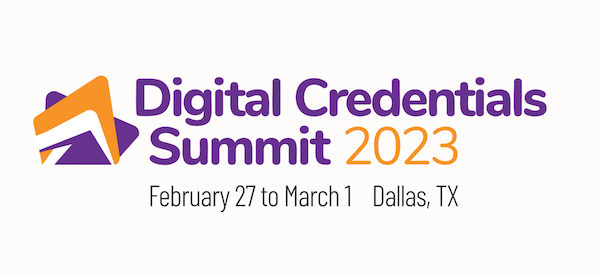Published on
Starting Slow to Go Fast Later: Creating Sustainable Microcredentials

Microcredentials have been making headlines and are only gaining more attention. Although they’re the latest hot topic in higher ed, they’ve been around for years and aren’t going away anytime soon. But even before beginning to implement these credentials, a strategic plan needs to be put in place. In this interview, Mary Elizabeth Smith and Nick Williams discuss the need for sustainable microcredentials, lessons learned from their implementation and how to deliver them consistently and meaningfully.
The EvoLLLution (Evo): Why is it so important for higher ed institutions to focus on sustainable microcredentials, especially in today’s environment?
Mary Elizabeth Smith (MES): For us, it’s about immediate application to the workforce. Our working adults want to immediately use what they’ve learned, so we’ve aligned our credentialing strategy with the skills mapped out in the curriculum, which are then aligned with course learning outcomes. Those learning outcomes are measured through authentic assessment.
Nick Williams (NW): For us, it’s important that it’s baked into the curriculum and is an important cornerstone for how we’re redesigning the learning our students will take away. It’s not layered on top because it’s the hot new thing right now—it’s a core component of the curriculum. It’s not going away next year when we hear some other buzzword.
Evo: What does it take to roll out innovative credentialing practices across the institution? And how do you create the internal buy-in?
MES: Piloting is key because you need to test your assumptions about what resonates with not only learners but also employers. We pilot based on research with business partners and advisory boards. Throughout the process, you must meet with a diverse group of stakeholders. So, through the piloting process, we’re starting to create that alignment with information-sharing between groups. As part of the pilots, we survey students and faculty to understand impact, including acceptance and shared rates, along with progression. We’re able to determine our next steps in guiding programs and digital credentials to resonate with both learners and employers.
NW: With our pilots, we initially went slow to be able to go fast now. For scaling and other badges, we’re repeatedly going back to the learning in those pilot phases to guide future proposals in areas where our college partners want to build badges next and where new ideas are emerging.
In terms of buy-in, we’ve solidified that diverse stakeholder group across the institution into a badging governance committee. With this group, we’ve solidified the ways in which we’ll continue to work with groups and understand how we can stay sustainable. Governance is there to support other groups at the institution to ensure they’ll succeed in meeting institutional, learner and employer needs.
From a technical standpoint, we’ve tried to ensure architects and data teams have the right infrastructure in place, leaning on 1EdTech’s standards for developing language and technical specifications to build all of this. We want everything to work seamlessly together, so it’s shareable. The work we do with badging and governance is paving the way for long-term innovation and buy-in.
MES: Starting slow to go fast now—that piloting—has allowed us to scale. As of now, we’ve awarded 165,000 badges to learners. That wouldn’t have happened without taking the time to learn how to communicate with students and how to create sustainable, not manual, infrastructure.
Evo: What are some challenges that come with implementing microcredentials?
NW: Scaling and automating some of our processes have to be at the forefront. It remains a challenge because we’re developing through a governance committee and creating more sophisticated use cases to provide badges. That requires some automation, especially for an institution of our size, so it’s more sustainable to check-in on students and their progress. We’re off to a good start.
MES: In addition to automation and student communication, digital credentialing is better known in a professional environment. Not all learners are aware of what a digital credential is and the value it brings. We need to show them that you can easily communicate value, that you can share it on social media and help employers understand the skills you’ve attained.
We know we constantly need to tweak our message about the value of these digital offerings to students. We’re in deep research and found that, out of 3000 students, 25% had previously earned a credential and 65% of students believed a credential would help them. But there’s still confusion around the value of sharing. We recognize that students might wait to share their credentials based on their current stage but knowing it’s in their back pocket of skills is a win-win. At the end of the day, there will always be tweaks to student communication.
Evo: Is it challenging to communicate with employers in terms of common language and terminology?
MES: If you look at how we map our curriculum, we’ve verified skills and skill sets with the employer in mind and using employer data. So, it’s even more transparent and apparent to an employer, since we’re using the skills language they use to help them understand what a student brings to the table.
We have an app that allows anyone in our university wanting to propose a digital credential to submit information that shows the research they’ve done and validates the purpose of the credential.
NW: The colleges developing badges are in constant communication with industry through our practitioner faculty and industry advisory councils. They’re trying to keep their finger on the pulse and making sure it translates and provides students with immediate application to the workplace.
Evo: What are some best practices to classify microcredentials in a consistent and meaningful way to both the learner and the institution?
NW: We ask faculty and staff to focus on the value proposition for the student. It’s not just about satisfying the employer or our college’s needs. We have to provide the student with consistent value and we monitor the health of that value along the way. Governance and the intake process for new badge ideas really help our colleges vet their ideas and come out with a process that has been critically reflected on and hits different areas.
MES: Research into what’s resonating in the marketplace, the value students get is critical because simply providing something doesn’t mean people want it. It needs to answer students’ questions. What’s in it for me? How do I translate that? Why do I want it? Illustrating a badge’s value statement for is a best practice.
Change management is also key. Everyone at the institution needs to know what’s going on with these types of innovation. They need to be able to support their students and understand how these offerings can help set them apart in the job marketplace.
NW: That change management piece kicks off our workflows every time we have a new badge. We make sure to communicate with faculty that we’re working alongside them with academic advisors and support teams that are the first line of help for students. We must make sure these groups are aligned with us and that we all speak the same language.
Evo: How do you see microcredentials playing a role in higher ed over the next five years?
NW: We’re trying to tie all this into a common language to ensure what we’ve designed can be transferred broadly, that data are displayed and credentials are shareable. One way that microcredentials provides those elements is packaging skills and learning components that are sharable and transferable. Students then can self-advocate more strongly with this solid evidence. This package helps give students a confidence boost when they go into the workforce.
Evo: Is there anything either one of you would like to add about implementing or scaling credentials?
MES: It’s paramount for any institution who wants to thoughtfully offer digital credentials to test assumptions. Everyone wants to jump off feet first, but you have to understand what you’re responding to. Many employers indicate a talent gap exists, so we want to quickly identify the skills employers need, and a thoughtful, tested microcredential strategy can do that. Institutions can then offer meaningful digital credentials that students can parlay into new opportunities. So, over the next five years, we must be thinking about how we can help students identify the skills they’re accumulating throughout a program and what they can do with them as they progress.
This interview was edited for length and clarity.
Nick and Mary will be presenting on this topic at the 1EdTech’s Digital Credential Summit in early march. To learn more, click here.

Author Perspective: Administrator



